Summary Background
OVERVIEW
The regional and county-level data shown below highlight the demographic and economic statistics of the NCPDD region using the Community Capitals Framework as a guide.
The data shows that the largest industries in the NCPDD region are currently related to services, retail trade, manufacturing, government, and construction. Other notable sectors include wholesale trade, transportation, and agriculture (Source: www.yallbusiness.com).
Manufacturing accounts for 18% of the jobs in the region, while non-manufacturing accounts for 82%.
To support these industries and develop a broader foundation in other industries, such as manufacturing and services, it is essential that local governments in the region collaborate on essential services, such as built infrastructure, broadband, and housing options.
By the year 2030, the population of the seven-county region is projected to decline 8.21%. This is a decrease of 10,446 people. Reversing this downward population trend will require new ways of thinking that go beyond traditional community and economic development strategies.
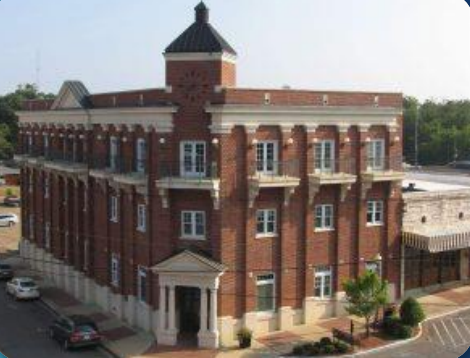
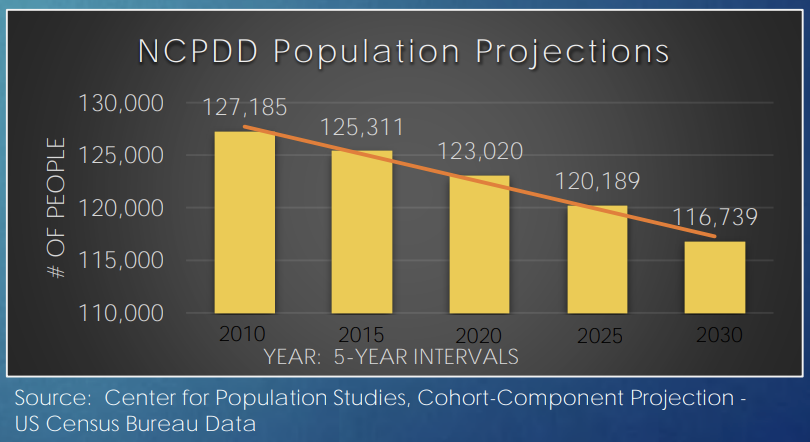
1. HUMAN CAPITAL
The NCPDD region has a population of 127,185 people, according to the 2010 Census. This amount represents 4.2 % of the statewide population. From 1970 to 2010, the population of the District declined 8%, or 11,700 people.
As mentioned previously, the population of the District is predicted to continue declining over the next several decades, although some jurisdictions within the District will experience growth.
While the population of the district continues to decline, there is a growing number of retirement age and older individuals age 60 and above. This demographic is a resource for additional workforce development or volunteerism.
As this demographic continues to change, it will require planning and strategic investment to address the needs of the older population through additional services and facilities.
The annual unemployment rate for the District was 7.6% in 2016, the lowest in over a decade (Source: Mississippi Department of Employment Security, 2016 Labor Market Data). This figure does not, however, account for working age people not currently registered for unemployment or who are underemployed.
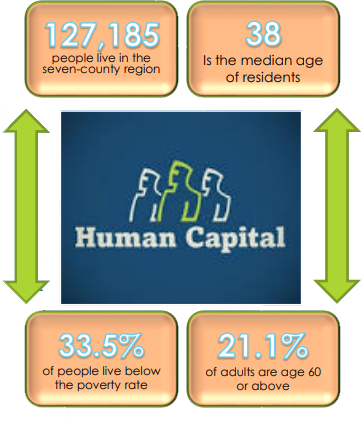
People are the greatest asset in our District. However, the region is losing population due to outmigration. Stakeholder input indicates that this is primarily due to the perceived lack of quality of the public education system as well as lack of quality job opportunities
2. NATURAL CAPITAL
Located in the heart of Mississippi, the NCPDD region has a rich natural environment that reflects a diversity of landscape – from rolling hills in the eastern portion to the flat delta land in the western portion.
There are 1.4 million acres of forested land in the District. There are also many working farms with 1.1 million acres of prime farmland, including 30,000 acres of land being used to produce a variety of agricultural row crops (Source: Mississippi Forestry Commission, USDA Agricultural Census).
The region abounds in outdoor recreational opportunities. There are two state parks and lakes operated by the US Army Corp of Engineers (George P. Cossar State Park located on the shores of Enid Lake in Yalobusha County and Hugh White State Park at Grenada Lake in Grenada County) that attract more than 2 million visitors every year.
There are also four national wildlife refuges and wildlife management areas in the District that provide excellent opportunities for hunting, fishing, hiking, or camping:
- Matthews Brake (Holmes and Leflore Counties)
- Morgan Break (Holmes County)
- Hillside (Holmes County)
- Malmaison (Carroll, Grenada, and Leflore Counties)
The region is situated in the middle of one of the largest privately-owned and untapped wood fiber sources in the South, but its full potential is not being realized due to the lack of infrastructure.
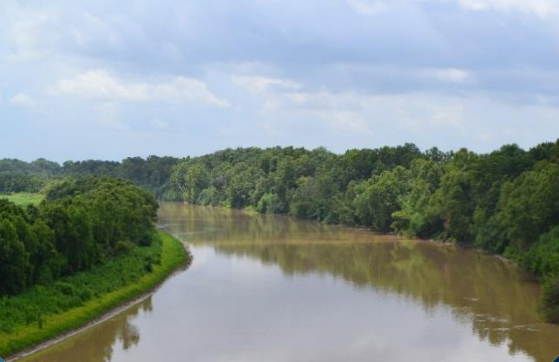
Featured above is a photo of the Yazoo River, which is one of four significant river systems in the District. The others are the Big Black, Yalobusha, and Yockanookany rivers.
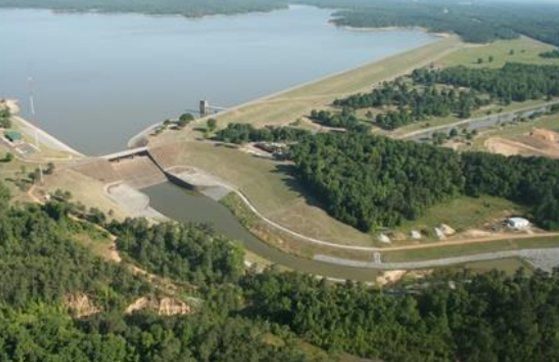
Enid Lake, which is featured in the photo above, is one of two lakes operated by the US Army Corp of Engineers.
3. CULTURAL CAPITAL
In an era in which technology, mobility, and mass communication have tended to create a composite national culture, it is the cultural traditions that set the District apart.
The District has a rich cultural heritage. There is an enduring sense of place and history that is manifest in its commitment to the preservation of its historic landmarks, artifacts, and furnishings of the past.
There are 68 registered landmarks and 4,668 registered properties in the seven-county region (Source: MDAH, Historic Resources Inventory Database).
Every year numerous festivals and events are held throughout the District – from the Watermelon Festival in Water Valley and Thunder on Water in Grenada to the Carrollton Pilgrimage and Balloon Classic in Greenwood.
To prepare the way for rural economic development, a regional strategy should be developed to help communities market their unique characteristics in order to “sell” its cultural assets.
Communities all throughout the District are taking steps to not only preserve the past but also prepare for the future.
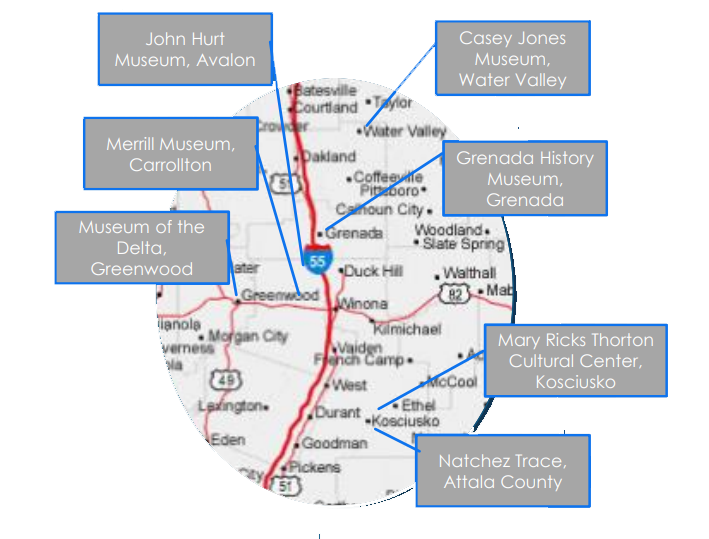
“I think the biggest thing that has changed here [Water Valley] is the attitude about what’s possible. I think there’s really a can-do spirit and we’re going to do it ourselves. If you wait for someone to help you, it will never happen.”
– Mickey Howley, Water Valley Main Street Director
5. POLITICAL CAPITAL
Each of the seven counties in the region are organized into a five-member board of supervisors. The board is responsible for pass-through funding and programs available from state and federal resources.
There are also 26 municipalities with 9 cities and 17 towns organized according to the laws of the State of Mississippi (see list to the right).
The elected officials in these local governments direct the economic development efforts of the region, proactively securing growth for their communities. They are most interested in the development of industry that will responsibly use the area’s natural resources, enhance the
standard of living, and create sustainable jobs.
Mississippi Municipal League (MML) and Mississippi Association of Supervisors (MAS) provide strong leadership for local governments across the state. The Center for Government and Community Development, a unit of the Mississippi State University Extension Service, is also a resource.
All three of these organizations provide leadership training for elected officials to increase their capacity and effectiveness to leverage projects of local, regional, and national significance.

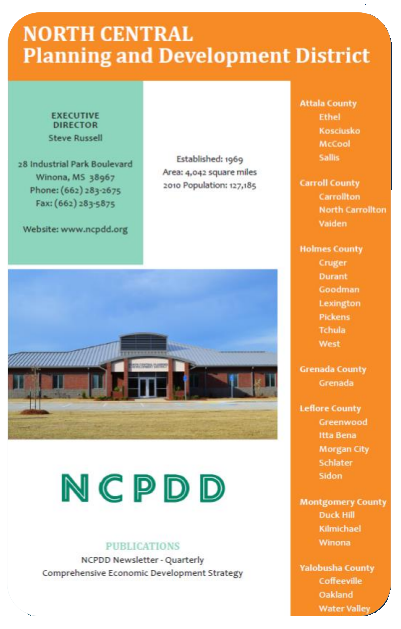
Elected officials within the region have major concerns about outmigration of the region’s educated youth; safety (including crime and emergency response capabilities); and maintaining and improving infrastructure.
6. FINANCIAL CAPITAL
Many of the local governments in the region have made financial capital the focus of community efforts. For example, NCPDD applies for many state and federal grants on behalf of local governments to replace aging infrastructure every year.
NCPDD also offers four (4) loan programs that inject capital into startup and existing small businesses as well as a program that allows for the lease/purchase of public buildings for local governments.
General funds cash reserves for the seven counties in the District total more than $20.6 million, with $31.2 million in general obligation debt outstanding and revenue bond debt on enterprise operations.
An excellent example of financial capital in a community is a community foundation. Currently, Leflore County is the only county in the District with connections to a community foundation – the Community Foundation of Northwest Mississippi.
A significant amount of wealth is located within the region. Capturing a percentage (e.g., 10%) of the expected wealth transfer over the next decade through charitable giving would enable more jurisdictions in the District to support community and economic development, leadership training, and youth entrepreneurship.


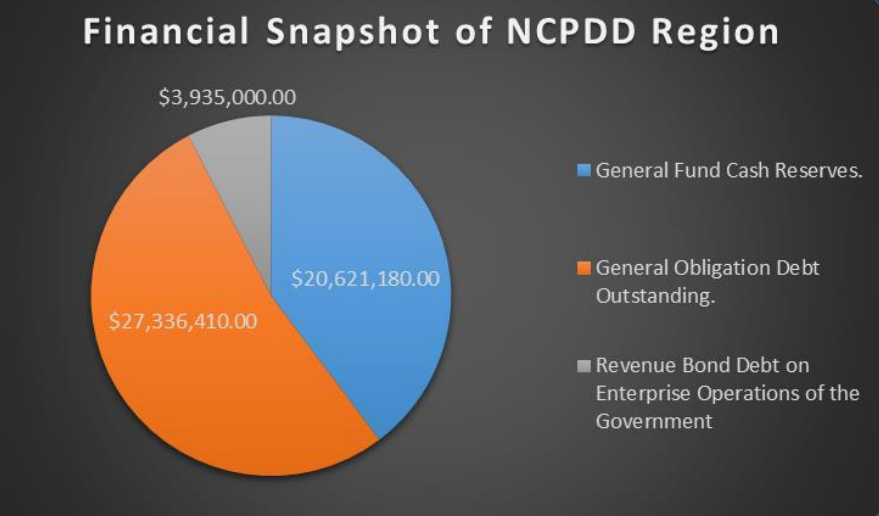
Measuring a community’s financial capital is not simply adding up the amount of money in the bank. Instead, having money with the purpose of creating wealth in the future is what indicates a community’s financial capital.
7. BUILT CAPITAL
A major theme that emerged from the CEDS process was the need to maintain and modernize infrastructure.
In addition to making improvements to roads and public water/sewer systems, high quality telecommunications systems, particularly broadband service, were identified as a key component to recruiting employers and talent to the region.

Highways
There are two major four-lane highways intersecting the region: Interstate 55 (I-55), which runs north/south through the District, and US Highway 82, which runs east/west.
The communities located in close proximity to these roadways enjoy excellent transportation access, but the majority of the region remains poorly connected.
I-55 and Highway 82 intersect at Winona, making it the only location in the District with four-lane highways running in all directions, establishing an important strategic location. Secondary routes include MS highways 51, 35, and 17.
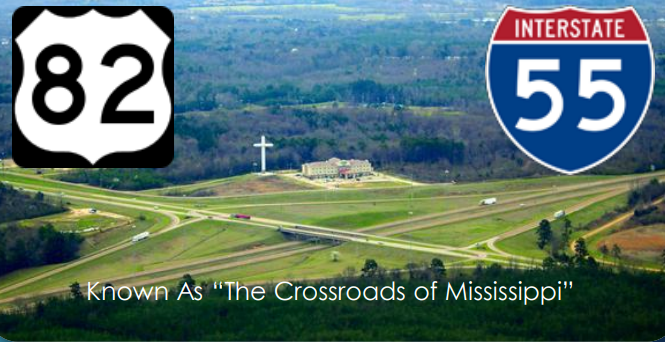
Aerial View of US Highway 82 and I-55 at Winona.
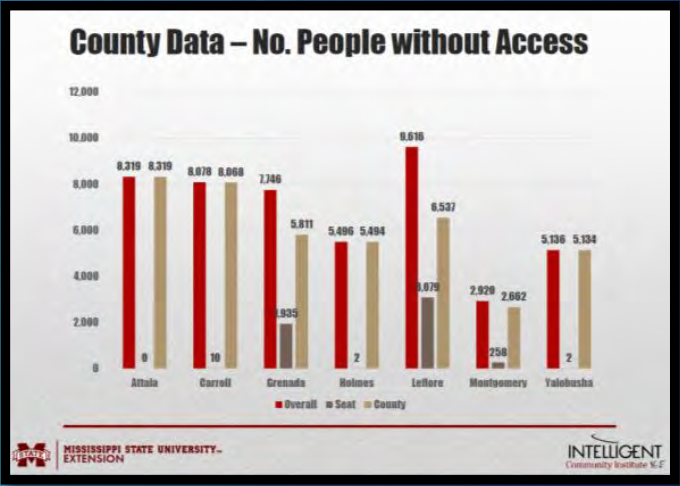
Airports
There are no commercial service airports in the District. However, there are six general aviation airports. Services include corporate
and agricultural aviation, air cargo activity, flight instruction, military operations, recreational, airshows, medical evacuation, forest firefighting, aerial photography, civil air patrol, and search and rescue services (Source: MDOT Multiplan, December 2009).
Transit
There are three main railroads in the District. Canadian National uses tracks and spurs throughout the region. Amtrak offers daily passenger rail service at its Greenwood station on its route between Chicago and New Orleans.
The Grenada Railway, a 186-mile short line railroad, also runs through the District parallel with I-55. Iowa Pacific is the current operator of the line. Because of the abundance of timber in the region, revitalizing the line could open the doorway wide for the forest products industry in our region, stimulating millions of dollars in economic growth and development.
Safety is a major concern within the communities that have railroads. This is because several communities are divided by train tracks in their central business district. Transportation of hazardous materials through communities is also a concern for emergency management officials.
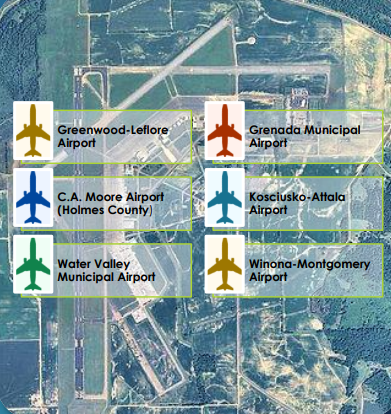
Aerial Photo of Greenwood-Leflore Airport
As the region continues to develop, jurisdictions must work together to develop a well-balanced system of infrastructure, community and economic development that serves residents, supports communities, and attracts new businesses to ensure both economic vitality and resiliency.


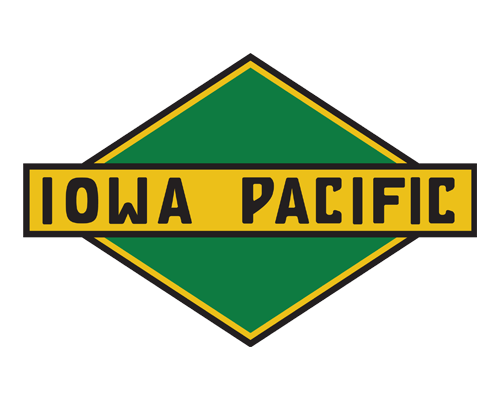

4. SOCIAL CAPITAL
The District is comprised primarily of small rural communities with only a couple of larger population centers. The two largest cities in the District are Greenwood (15,873 people) and Grenada (12,951 people), according to 2014 ACS data.
Like most other Mississippians, residents in the region tend towards moderate or conservative values. Because of cultural similarities and similar value systems, the District has a decent amount of social capital that can be leveraged to improve quality of life and economic growth potential.
Examples of social capital in the region range from civic clubs, churches, and other community organizations to values, trust, norms, and people with connections inside and outside the community who are able to mobilize resources and volunteers.
In general, social capital is declining in the region and United States. This is seen in lower levels of trust in government and lower levels of civic participation. Concentrated efforts will be required to reverse this trend.
From a rural community perspective, declining social capital could have profound negative consequences for economic development efforts because strong social capital networks are often the necessary first step in the evolution of the leadership necessary for achieving economic development.
Residents share major concerns such as improving community and economic development; public education; homeland security and emergency preparedness; decreasing crime and health care costs.